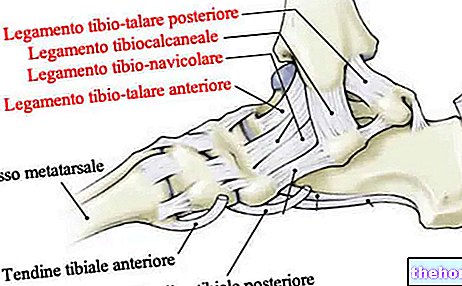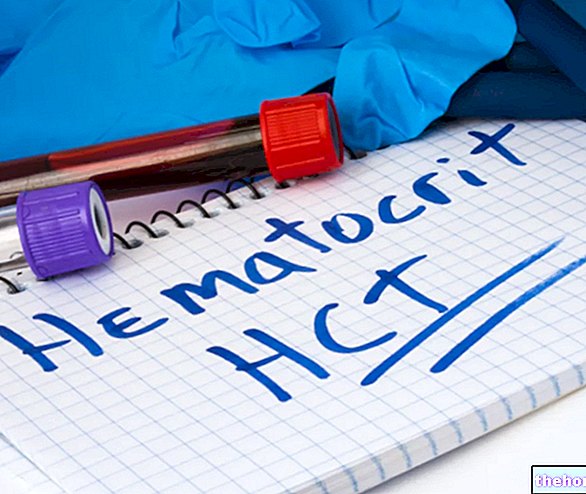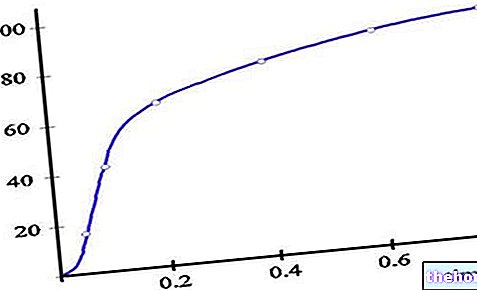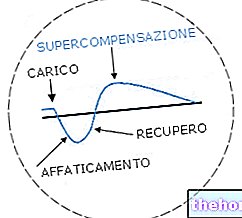Edited by Dr. Gianfranco De Angelis
It is "disheartening to see instructors and personal trainers in gyms giving" empirical "explanations on various topics: muscle mass (hypertrophy), increases in strength, endurance, etc., without even having a rough knowledge of the histological structure and physiology of muscles.
Few have only a more or less in-depth knowledge of macroscopic anatomy, as if it were enough to know where the biceps or pectoral is, ignoring the histological structure and even less the biochemistry and physiology of the muscles. make a brief and simple discussion of the subject, accessible even to laymen of the biological sciences.
Histological structure
Muscle tissue differs from other tissues (nervous, bone, connective), for one obvious characteristic: contractility, that is, muscle tissue is capable of contracting, or shortening its length. Before seeing how it shortens and for which mechanisms, let's talk about its structure. We have three types of muscle tissue, different both histologically and functionally: skeletal striated muscle tissue, smooth muscle tissue and heart muscle tissue. The main functional difference between the first and the other two is that while the first is governed by the will, the other two are independent of the will. The first is the muscles that move the bones, the muscles that we train with barbells, dumbbells and machines. The second type is given by the muscles of the viscera, such as the muscles of the stomach, intestines, etc. which, as we see every day, are not controlled by the will. The third type is the cardiac one: the heart is also made of muscles, in fact, it is capable of contracting; in particular, the heart muscle is also striated, therefore similar to the skeletal one, however, an important difference, its rhythmic contraction is independent of the will.
The skeletal striated muscle is the one responsible for voluntary motor activities, therefore for sports activities. The striated muscle is made up of cells, like all the other structures and systems of the organism; the cell is the smallest unit capable of autonomous life. In the human organism there are billions of cells and almost all have a central part called nucleus, surrounded by a gelatinous substance called cytoplasm. The cells that make up the muscle are called muscle fibers: they are elongated elements, arranged longitudinally to the axis of the muscle and collected in bands. The main characteristics of the striated muscle fiber are three:
- It is very large, the length can reach a few centimeters, the diameter is 10-100 microns (1 micron = 1/1000 of mm.). The other cells of the organism are, with some exceptions, of microscopic dimensions.
- It has many nuclei (almost all cells have only one) and is therefore called a "polynuclear syncytium".
- It is transversely striated, that is, it presents an alternation of dark and light bands. The muscle fiber has elongated formations in its cytoplasm, arranged longitudinally to the axis of the fiber and therefore also to that of the muscle, called myofibrils, we can consider them as elongated cords placed inside the cell. of the streaks of the whole fiber.
Let's take a myofibril and study it: it has dark bands, called bands A, and light bands called I, in the middle of band I c "is a dark line called line Z. The space between one line Z and the other is called sarcomere , which represents the contractile element and the smallest functional unit of the muscle; in practice, the fiber shortens because its sarcomeres are shortened.
Now let's see how the myofibril is made, that is what is called ultrastructure of the muscle. It is made of filaments, some large called myosin filaments, others thin called actin filaments. The big ones fit together with the thin ones in such a way that band A is formed by the big filament (that's why it is darker), band I it is instead formed by that part of the thin filament that is not stuck to the heavy filament (being formed by the thin filament it is lighter).

Mechanism of contraction
Now that we know the histological structure and the ultrastructure, we can hint at the mechanism of contraction. In the contraction the light filaments flow between the heavy filaments, so that the bands I decrease in length; thus the sarcomere also decreases in length, that is the distance between one Z band and the other: therefore the contraction occurs not because the filaments have shortened, but because they have decreased the length of the sarcomere by sliding. length of the myofibrils, therefore since the myofibrils constitute the fiber, the length of the fiber decreases, consequently the muscle, which is made of fibers, is shortened. Obviously, for these filaments to flow energy is needed and this is given by a substance: l " ATP (adenosine triphosphate), which constitutes the organism's energy currency. ATP is formed from the oxidation of food: the energy that food has is passed to the ATP which then transfers it to the filaments to make them flow. contraction takes place also another element is needed, the Ca ++ ion (Calcium). The muscle cell keeps large stocks of it inside and makes it available to the sarcomere when contraction must occur.

Muscle contraction from a macroscopic point of view
We have seen that the contractile element is the sarcomere, let's now examine the whole muscle and study it from a physiological point of view, but macroscopically. In order for a muscle to contract, an electrical stimulus must arrive: this stimulus comes from the motor nerve, starting from the spinal cord (as it happens naturally); or it can come from a resected and electrically stimulated motor nerve, or by directly stimulating the muscle electrically. ; at this point we stimulate it electrically; the muscle will contract, that is, it will shorten by lifting the weight; this contraction is called isotonic contraction. If, on the other hand, we tie the muscle with both ends to two rigid supports, when we stimulate it, the muscle will increase in tension without shortening: this is called isometric contraction. In practice, if we take the barbell off the ground and lift it, this will be an isotonic contraction; if we load it with a very heavy weight and, while trying to lift it, therefore even contracting the muscles to the maximum, we do not move it, this will be called isometric contraction. In the isotonic contraction, we have performed mechanical work (work = force x displacement); in isometric contraction the mechanical work is zero, since: work = force x displacement = 0, displacement = 0, work = force x 0 = 0
If we stimulate the muscle with a very high frequency (i.e. numerous impulses per second), it will develop a very high force and will remain contracted to the maximum: the muscle in this condition is said to be in tetanus, therefore tetanic contraction means maximal and continuous contraction. A muscle can be contracted little or a lot, at will; this is possible through two mechanisms: 1) When a muscle is slightly contracted, only some fibers contract; increasing the intensity of the contraction, other fibers are added. 2) A fiber can contract with less or greater force depending on the frequency of discharge, ie the number of electrical impulses that reach the muscles in the unit of time. By modulating these two variables, the central nervous system controls how strongly the muscle must contract. When it commands a strong contraction, almost all the fibers of the muscle not only shorten, but all will shorten with a lot of force: when it commands a weak contraction only a few fibers shorten and with a lesser force.
Let's now address another important aspect of muscle physiology: muscle tone. Muscle tone can be defined as a continuous state of slight muscle contraction, which occurs independently of the will. What factor causes this state of contraction? Before birth the muscles are the same length as the bones, then, as they develop, the bones stretch more than the muscles, so that the latter are stretched. When a muscle is stretched, due to a spinal reflex (myotatic reflex) it contracts, therefore the continuous stretching to which the muscle is subjected determines a continuous state of light but persistent contraction. The cause is a reflex and since the main feature of reflexes is non-voluntariness, the tone is not governed by the will. Tone is a phenomenon on a nervous reflex basis, so if I cut the nerve that goes from the central nervous system to the muscle, it becomes flaccid, completely losing its tone.
The contraction force of a muscle depends on its cross section and is equal to 4-6 kg.cm2. But the principle is valid in principle, there is no precise direct proportionality ratio: in an athlete, a muscle that is slightly smaller than that of another athlete can be stronger. A muscle increases its volume if it is trained. with increasing resistances (this is the principle on which weight gymnastics is based); it should be emphasized that the volume of each muscle fiber increases, while the number of muscle fibers remains constant. This phenomenon is called muscle hypertrophy.
The biochemistry of the muscle
Let us now address the problem of the reactions that occur in the muscles. We have already said that energy is needed for contraction to occur; the cell conserves this energy in the so-called ATP (adenosine triphosphate), which, when it gives energy to the muscle, is transformed into ADP (adenosine diphosphate) + Pi (inorganic phosphate): the reaction consists in removing a phosphate. So the reaction that takes place in the muscle is ATP → ADP + Pi + energy. However, ATP stocks are few and it is necessary to re-synthesize this element. Therefore, in order for the muscle to contract, the reverse reaction must also occur (ADP + Pi + energy> ATP), so that the muscle always has ATP available. The energy to make the ATP resynthesis take place is given to us by food: these, after they have been digested and absorbed, reach the muscle through the blood, where they release their energy, precisely to make ATP form.
The energy substance par excellence is given by sugars, in particular glucose. Glucose can be broken down in the presence of oxygen (in aerobiosis) and is, as they say improperly, "burned"; the energy that is released is taken by ATP, while all that remains of the glucose is water and carbon dioxide. 36 molecules of ATP are obtained from one glucose molecule. But glucose can also be attacked in the absence of oxygen, in which case it turns into lactic acid and only two molecules of ATP are formed; lactic acid then, passing into the blood, goes to the liver where it is again transformed into glucose. This cycle of lactic acid is called the Cori cycle. What practically happens when the muscle contracts? At the beginning, when the muscle begins to contract, the ATP is immediately depleted and, since there have not been the cardiocirculatory and respiratory adaptations that will occur later, the oxygen that reaches the muscle is insufficient, so the glucose breaks down into absence of oxygen forming lactic acid. In a second time we can have two situations: 1) If the effort continues lightly, oxygen is enough, then the glucose will oxidize in water and carbon dioxide: lactic acid will not accumulate and exercise can go on for hours (this type of effort is therefore called aerobic; for example cross-country running). 2) If the effort continues to be intense, despite a lot of oxygen reaching the muscle, a lot of glucose will split in the absence of oxygen; therefore a lot of lactic acid that will cause fatigue (we talk about anaerobic effort; for example a fast run, such as 100 meters). During rest, lactic acid, in the presence of oxygen, will turn back into glucose. At the beginning, even in aerobic effort, we lack oxygen: we speak of oxygen debt, which will be paid when we rest; this oxygen will be used to resynthesize glucose from lactic acid; in fact, immediately after exertion we consume more oxygen than normal: we are paying off the debt. As you can see, we have cited glucose as an example of fuel, because it represents the most important of muscle; in fact, even if fats have a greater quantity of energy, to oxidize them a certain amount of glycides and much more oxygen are always needed. In the absence of these there are considerable disturbances (ketosis and acidosis). Proteins can be used as fuel, however, since they are the only ones used to train muscles, the plastic function prevails in them. Lipids have the characteristic that, for the same weight, they have more energy than sugars and proteins: they are ideally used as So the glycides are the fuel, the proteins are the raw materials, the lipids are the reserves.
In this article on muscle physiology I have tried to be as clear as possible, without neglecting scientific rigor in the least: I believe that I will have achieved an excellent result if I have stimulated fitness professionals to take a more serious interest in physiology, because I believe that fundamental notions of physiology and anatomy must be an indispensable cultural heritage to try to understand in some way this wonderful human body.
















.jpg)











